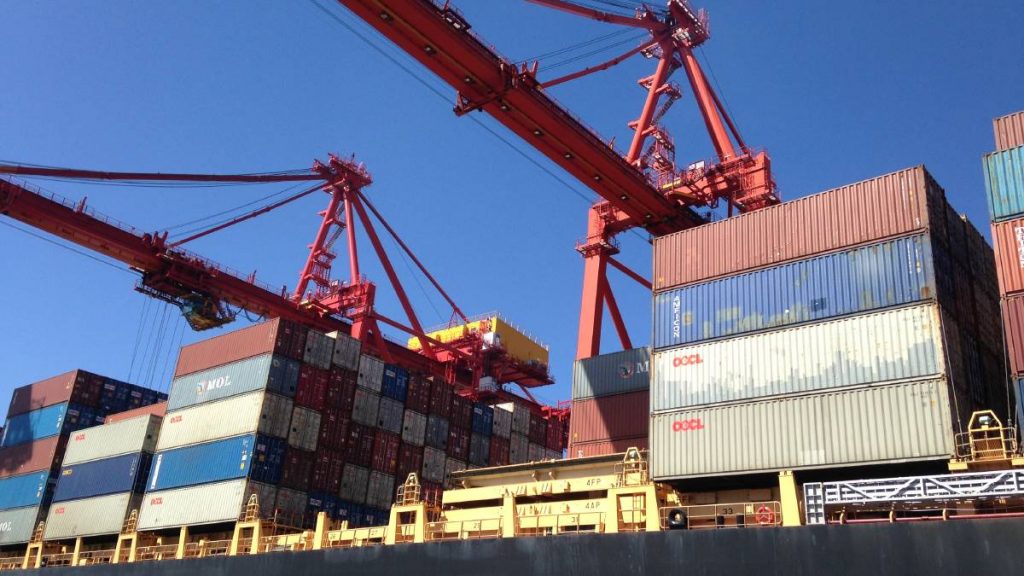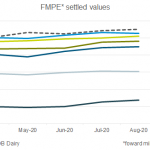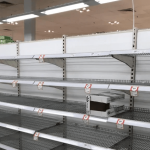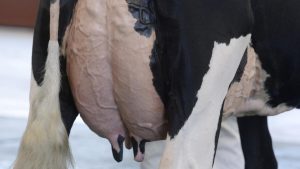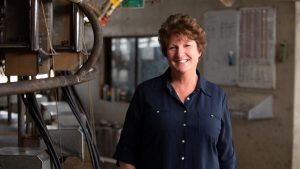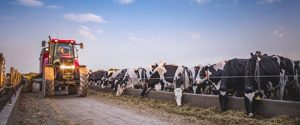
The Global Dairy Trade auction defied pundits’ expectations on Tuesday night, falling by 3.9 per cent, well below futures market predictions.
The key whole milk powder price was down 4.2pc compared with futures market predictions of a 9-11pc fall
Some commodities even bucked the downward trend with lactose up 4.9pc and cheddar up 2.6pc.
Westpac head of NZ strategy Imre Speizer said Tuesday night’s auction was expected to be the first to be significantly affected by the coronavirus outbreak, with global containment measures accelerating in early March.
“However, the 3.9pc fall is of a similar magnitude to the three previous auction falls (-4.7pc, -2.9pc and -1.2pc),” he said.
But Rabobank said the onset of the virus in the world’s largest dairy importer China and the permeation across the globe had dairy buyers and sellers scrambling to assess the market impact.
“Global dairy commodity prices have already priced-in the uncertainty,” Rabobank senior dairy analyst Michael Harvey said.
New Zealand bank ASB senior rural economist Nathan Penny said he anticipated NZ’s dairy and food exports were going to hold up relatively well.
“Indeed, we anticipate that global food demand is likely to remain firm (outside of premium foods) as food consumption is prioritised in household budgets,” he said.
“A good example of this is in China where food imports are being fast-tracked for entry via ‘green lanes’ at Chinese ports.”
Mr Speizer said since the outbreak, whole milk powder had fallen by 13.5pc, less than other globally traded commodities, including sugar, wheat, copper and crude oil.
“The evidence to date is that during this pandemic, dairy commodities have outperformed most major commodities, perhaps a testament to demand for core foods with health properties,” he said.
North Asian demand bounced back at Tuesday night’s auction, from a weaker showing at the previous auction.
“While demand for dairy products has been more robust than for other commodities, it is likely to remain affected by the economic fallout from the pandemic for some time,” Mr Speizer said.
Rabobank’s Dairy Quarterly report pointed to anticipated China’s consumer buying patterns normalising by the second half of 2020, with evidence of improvement in some supply chains already visible.
But the report said the risk of a setback or a delayed economic recovery in China presented a major downward price risk to Rabobank’s forecasts.
Against this backdrop, global milk production from the big seven exporters (NZ, United States, European Union, Australia, Brazil, Argentina, Uruguary) was rising.
The combination of reduced Chinese imports, significant supply chain disruptions, including extreme competition for shipping containers across the globe, and rising dairy surpluses in export regions would keep downward pressure on global markets through much of 2020, the Rabobank report said.
Dollar impact
The relative strength of the US dollar against both the Australian and NZ dollars is also helping airy exporters.
Mr Penny said although dairy prices in US dollar terms were materially lower than prior to the COVID-19 virus outbreak, the NZ dollar was offsetting these falls.
On a weighted average basis, overall prices had fallen 13.2pc over February and March but the 8pc decline in the NZD/USD in the same period meant that in NZ dollar terms, prices were down a more modest 5.3pc, he said.
Australian analyst FreshAgenda lifted both its Australian dairy export index and sport commodity milk value for southern Australian dairy manufacturers this week on the back of the weaker dollar.
Both hit record levels.
It said the Australian dollar lost almost five cents against the US dollar last week, ending at US$0.6178.
“The combined impact of these factors lifted the commodity milk value for southern Australian dairy manufacturers by 79 cents to $8.12 a kilogram milk solids,” it said.
Australian outlook
Rabobank said milk production across Australia’s southern export dairy region should continue to gather momentum heading into 2020/21.
It is forecasting Australian milk production to finish 4.9 per cent lower by the end of the 2019/20 season at 8.4 billion litres.
National production grew in January, confirming the minimal impact from the bushfires.
“The turnaround in production so far has been led by Tasmania and eastern Victoria, which account for 32 per cent of Australia’s milk production,” Mr Harvey said.
The Rabobank report said solid rain events across dairying regions at the start of 2020, combined with strong milk price signals and relief from feed costs, had supported on-farm investments and higher milk flows.
